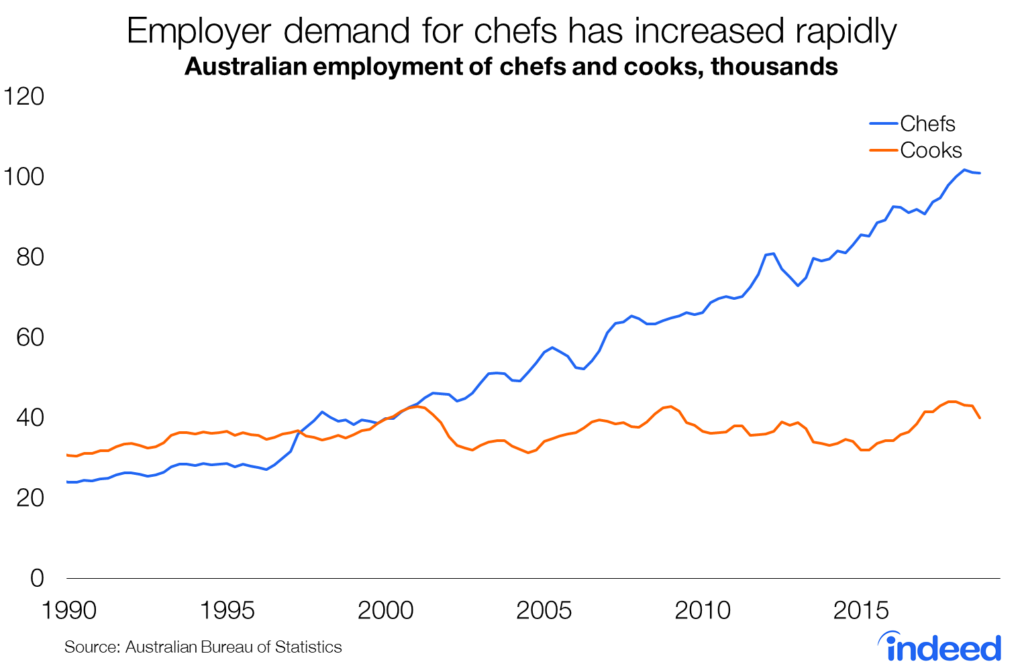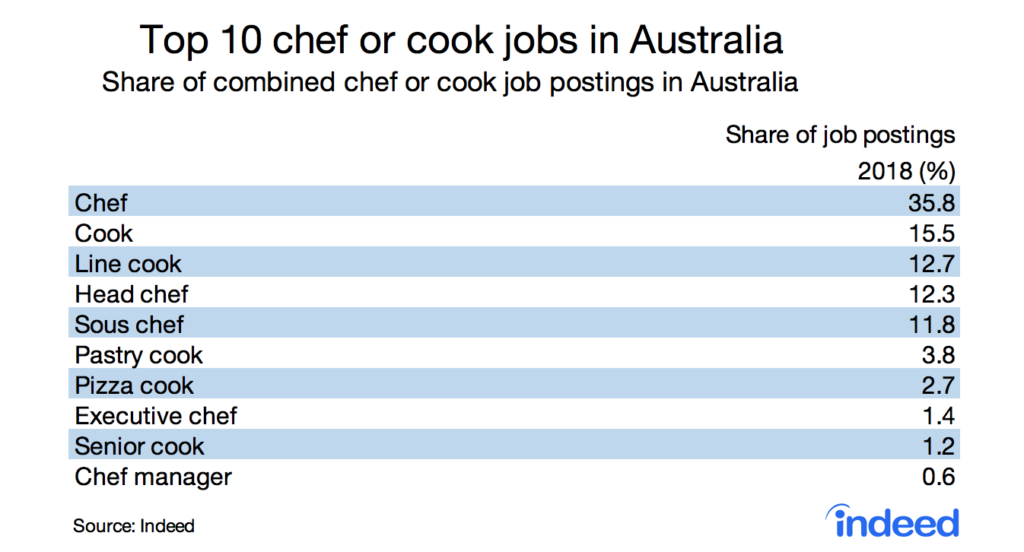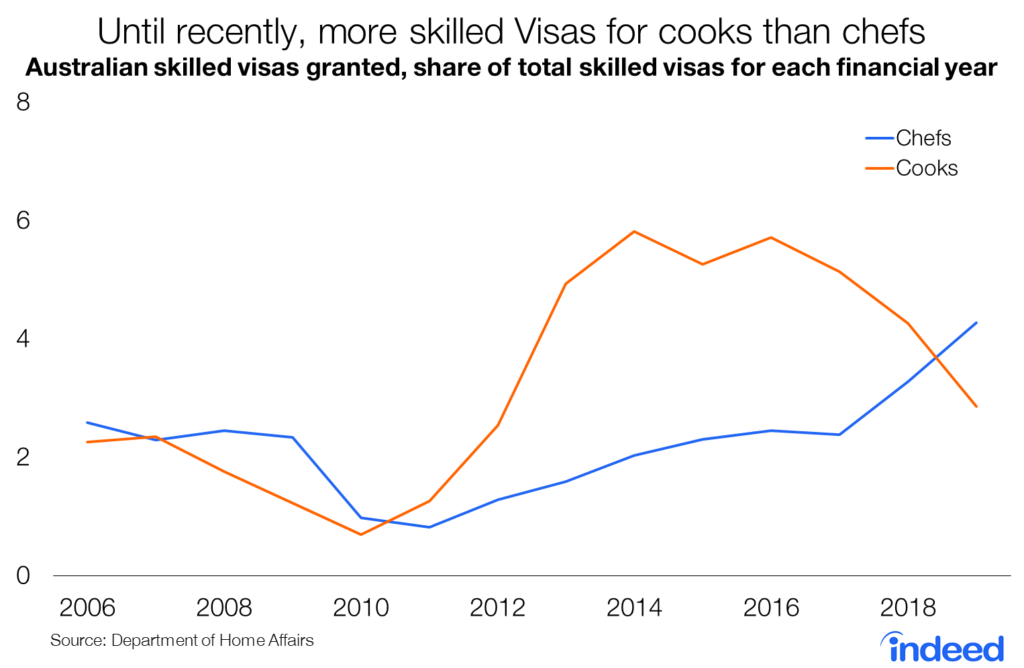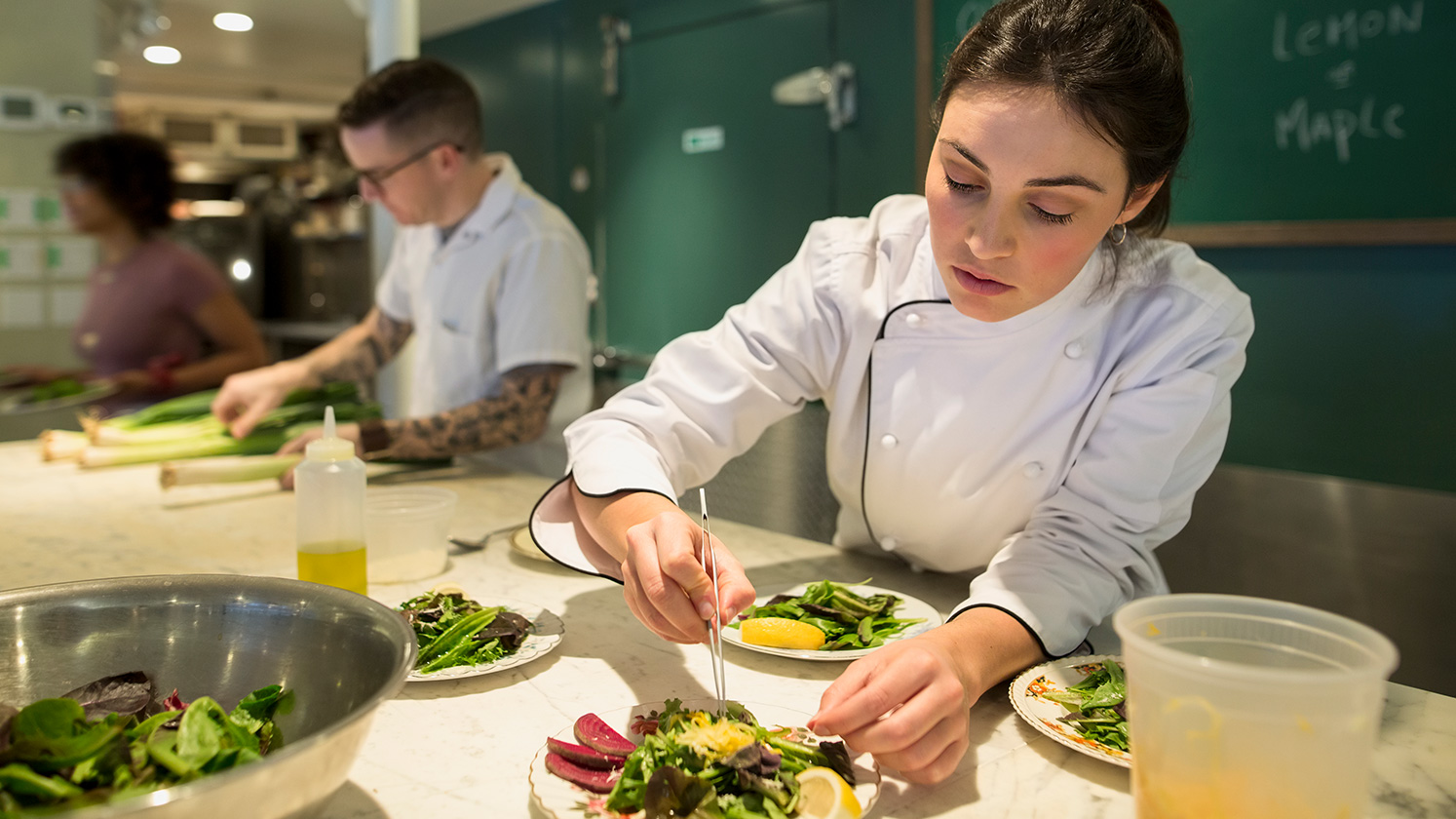Key points:
- In Australia, chef has been one of the fastest-growing occupations for the past three decades. Demand has barely wavered throughout that time even when the economy has struggled.
- The increasing demand for skilled chefs may have come at the expense of less-qualified cooks. This shift appears to reflect Australians’ growing taste for fine dining and the sit-down restaurant experience.
- Restaurants take advantage of Australia’s skilled visa programme, with thousands of visas granted annually for skilled chefs and cooks.
Australia’s obsession with fine dining has created huge demand for qualified chefs across the country. Becoming a chef may be arduous, typically requiring a certificate degree and an apprenticeship, not to mention long and odd hours. But it eventually pays dividends. Employment of chefs has increased over 5% a year for the past three decades. The increased sophistication of Australian diners has apparently come at the expense of the humble cook, who typically has less training and fewer qualifications.
The rise of the Australian chef
Employment of cooks has barely changed since 2000. By comparison, employment of chefs has surged, soaring 154% over the same period. Today around 100,000 chefs are working across the country, a more than four-fold increase in just three decades.

Despite differences in qualifications and experience, chefs and cooks are in some ways substitutes in the job market. At the same time though, the two occupations complement each other, with both often working side-by-side in the same kitchen. This surge of chefs may reflect Australians’ increased preference for sit-down meals, fine dining, and the restaurant experience. At the least, the composition of Australian kitchens has changed, with five of every seven chef/cook roles now filled by chefs, compared with a 50-50 split as recently as 2001.
It would be easy to attribute this change to popular television shows such as Masterchef and My Kitchen Rules, which have commanded high television ratings over the past decade. It’s likely that these shows have influenced culinary trends across the country. Yet rising demand for highly qualified chefs began well before that — in fact, chefs have been one of the fastest-growing occupations across the country over the past three decades.
Job postings for chefs and cooks
Indeed data shows job listings for chefs per million job postings easily outpace cook postings. On average each month, there are 80% more postings for chefs than for cooks.
Looking at both chef and cook job postings shows the most popular job titles in this sector. Chef and cook are naturally the most common, accounting for 36% and 15.5% of postings, respectively. Line cooks — who work under the head cook or chef — prep, cook and plate food. This job accounts for 12.7% of postings. Sous chef — normally a kitchen’s second-in-command — also features prominently. Evidently, every chef needs a good right-hand man or woman.

Foreign job seekers are chasing their food dream down under
Restaurants frequently attract foreign talent, with thousands of skilled visas granted to cooks and chefs each year. Australia is both a multicultural and high-income country, well known for its diverse cuisine, which makes it an attractive destination for culinary professionals. Given the rapid growth in employment of chefs, you’d naturally expect skilled visas for these workers to be much higher than for lower-skilled cooks. Surprisingly, you’d be wrong.
For most of the past decade, visas granted to cooks have easily exceeded those granted to chefs. Since 2006, cooks have accounted for 3.4% of skilled visas, with a peak of 5.8% in 2014, compared with 2.1% for chefs. This may reflect a tendency for chefs to seek visas either before or during their apprenticeship. In 2018-19, chefs overtook cooks for the first time since 2010, accounting for 4.3% of visas granted.
The characteristics of both chefs and cooks are similar, with around three-quarters of visas granted to applicants under 35. Jobs in New South Wales and Victoria get around three in five visas for both cooks and chefs. Grants have become more concentrated over time — in 2018-19, almost two-thirds of cook visas and three-quarters of chef visas were for work in our two biggest states.

Cooking shows have been the subject of water cooler gossip for much of the past decade. Millions of Australians have watched closely as contestants pull off remarkable culinary coups. Most Australians don’t have the time, or for that matter the ability, to prepare these dishes at home. Restaurants provide the answer and the huge demand for chefs, both domestically trained and from abroad, has established Australia as one of the world’s leading culinary destinations.
